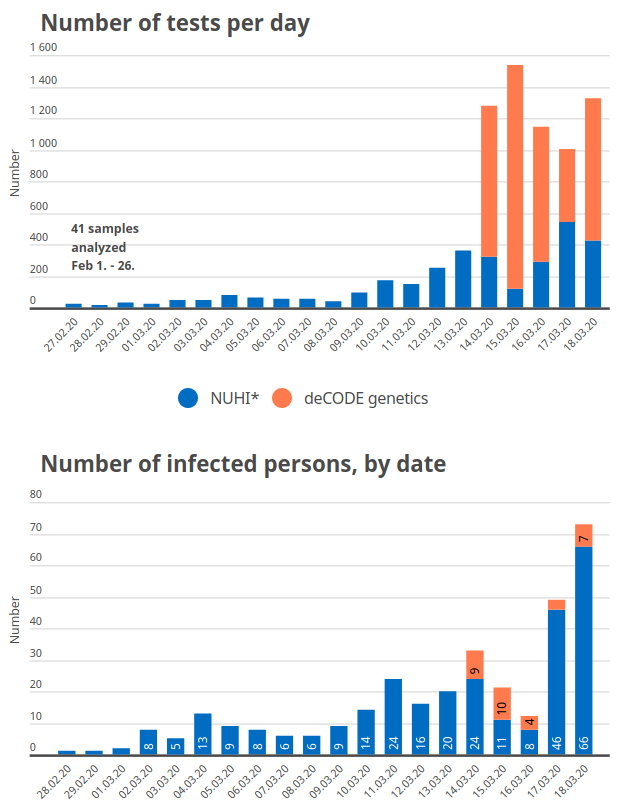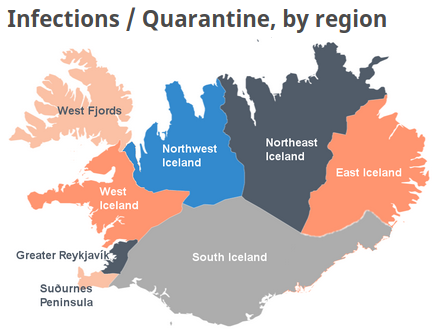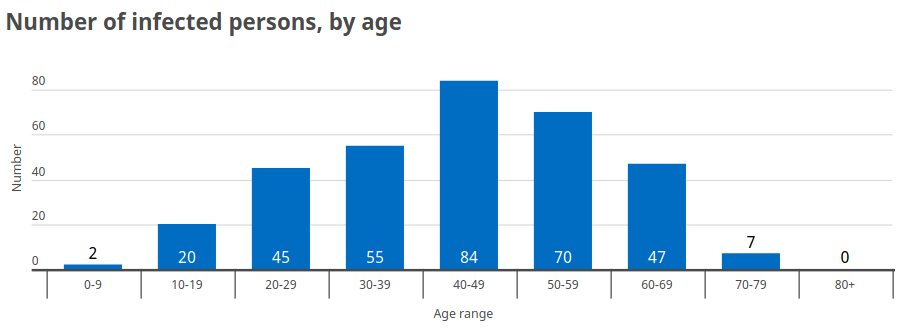COVID-19 in Iceland
COVID-19 (The Coronavirus) has been in Iceland now for a few weeks. It began slowly, with a few Icelanders returning from holiday in Verona, Italy. When a few of those showed symptoms, the rest of those traveling and those who were in close contact with the travelers immediately went into quarantine. Things were held tight.
Sadly, there were a few people who broke quarantine and spread the infection, while travelers coming through Austria brought in a new pathway for transmission. Little by little the infection rate has grown until today we reached 330 infected. So far our only death is a tourist who was infected abroad and traveled into the country. Only three others are hospitalized, while many remain in quarantine and the nation as a whole respects a ban on public assembly.
In this post I want to take a few minutes to explain how things are being handled here and why I’m proud of the actions in this small nation.
First, I mentioned that we are under a public assembly ban. That officially went into affect on Monday morning this week, though many had already been self-isolating. For us that means that we shouldn’t gather into groups of more than 100 people, and we are encouraged to avoid more than 10 in proximity. When we do encounter others it should be at a distance of two meters.
This should all sound familiar as it’s the same instructions we’re seeing around most of the world. Most business that can do so have employees working from home. We still have construction crews doing their jobs. Our primary school is still open (more on that in a bit).

Number of tests and infected in Iceland
The public has been very well informed throughout every part of this process. Our government has a daily press conference to update the country on the situation, including figures, plans, updates to instructions for the people, and so on. Unlike some other leaders who can’t keep their hands to themselves the conferences here involve everyone sitting at a table with their own personal microphone. Questions are asked, information shared, and that information has been consistent. In fact, if you want to check any of the information for yourself you can pop over to https://covid.is and see for yourself. That little flag icon in the corner is a dropdown and you can use the British flag for English. (The graphics on this post are screenshots from that page)

Quarantine rates by region
There are a few schools which have closed, and each area is dealing with the specifics in their own way. As you can see from the above image, there’s data available region by region. (The numbers can all be found at covid.is)
Here in Mosfellsbær, the primary school at Helgafellsskóli put out inquiries to all the parents to see if they were affected by isolation or quarantine, and whether they intended to send their children to school. Based on those responses they closed the school for one day to have all the staff put together a plan of action. That was Monday. Later that day we got word back of the plan during this pandemic:
The first, third, and fifth grades will go to school on dates that are odd in number, while the second and fourth grades go on even dates. Within each grade the students have been split into smaller groups (A, B, C, etc). Each group of each grade is given a specific time when school starts and ends, and a specific door through which they will enter and exit. These are staggered and arranged so that the groups do not cross each other’s paths. They play in isolated areas. They have separate bathrooms. And the school is completely disinfected every night.
To supplement the teaching, extra assignments are sent home with the kids to work on with parents during their off days. Those children who are unable to come to school at all are given learning packets with daily lesson plans and assignments that can be used by the parents.
This is one specific example of the detail of thought that’s being put into things. Teachers are incredibly well respected here, and deservedly so. They are brilliant and go through extensive training to gain their positions. Iceland is routinely in the top five educational systems worldwide year after year. We’ve seen that first hand with how Wit is responding to things, even in a foreign language.
Iceland is treating things seriously. In addition to public safety, they’re actively researching the virus and tracking its progression. A local genetics company, deCODE, has been performing full genome sequencing on the volunteer population of Iceland in addition to those infected. If you look at that graph at the top you can see how fast they are too. They’re able to fully sequence the genome of an individual in a matter of hours, and they’re looking not only for incidence rates, but also for signs of mutation. The data coming out will help researchers across the globe. Oh, did I mention that deCODE is doing all this for free? Yeah, they’re eating the costs.
When deCODE offered their help, the government actually turned them down at first. There was the not-quite-totally-altruistic nature that they would quickly be gathering a ton of data that would be invaluable to them as a private company after the fact, but also there was concern about the process and they wanted to follow all the specific health rules that the government is bound to. That only lasted one day, though, and they came to a common ground and things have rapidly been increasing ever since.
And what about the health care system? Well, it was obvious from the start that this pandemic has the potential to spike cases and overload things. It also threatens to infect those same caregivers we rely upon. So, wisely, a call was put out for volunteers with experience to step up as backup workers.
Well, they got them! A ton of people, including many retired workers, volunteered. The same goes for emergency crews, drivers, police, and so on. A Facebook group was started where people can volunteer to pick up groceries or do other helpful work for those stuck in isolation and quarantine. It gained thousands of volunteers in just hours.
The people here have a common goal. They have had a common message of the seriousness of this situation from the start. People are respectful, helpful to one another, and will make it through this as well as possible.
The economic factors will obviously impact the nation for some time to come, but there are many tools at the disposal of the government. The crash in 2008 proved to the locals that they can get through those tough times and flourish. The people are prepared.

Infection rates by age
And finally, let me share this one last graph. I know there’s a lot of people still saying this is a condition which is worst on the elderly, those with suppressed immune systems and those with underlying conditions. Well, yes, but that’s true of just about every disease. That should not make you think you are safe because you’re young. Even if you ignore the absolutely essential fact that you could infect those more susceptible than yourself, just being young will not necessarily protect you.
Be safe, and wash your hands.